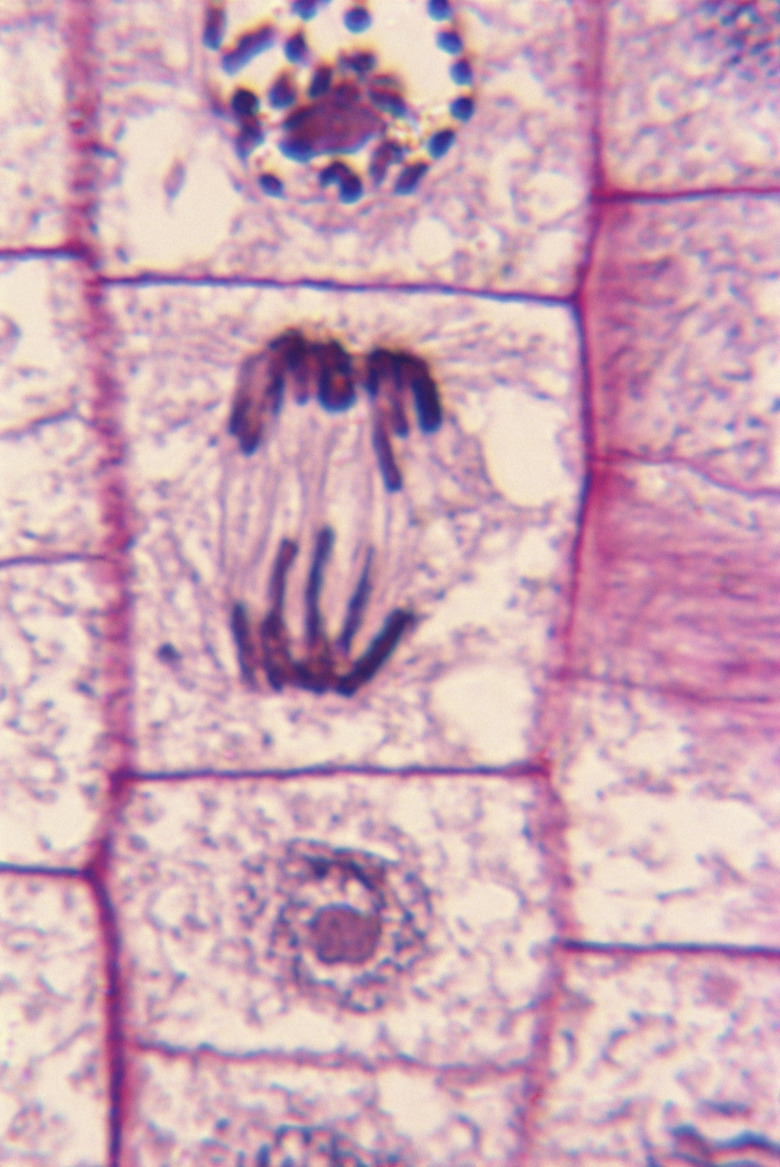What Is The Relationship Between A Chromosome & An Allele?
Deoxyribonucleic acid, or DNA, is the substance that living organisms use to store genetic information — that is, information that an organism inherits from its parents. The genetic code is organized in long strands called chromosomes, consisting of DNA and proteins. Organisms that reproduce sexually normally have a characteristic number of chromosome pairs, with each pair member coming from each parent. A DNA allele is the corresponding location on a chromosome.
Read more about the DNA's structure, function and importance.
Let's look a bit closer at the chromosomes, genes, and alleles relationship.
DNA Structure
DNA Structure
DNA is a chain of repeating sugar and phosphate units. One of four different nucleotide bases — a single- or double-ringed molecule that contains nitrogen — hangs off each sugar unit. The sequence of bases along the DNA sugar-phosphate backbone spells out the genetic code.
In most organisms, a chromosome contains two strands of DNA united in a double-helix structure in which the bases of one strand bind to those of the other. The sequence of bases in one strand determines the sequence in the sister strand. This is because only certain bases can pair with each other. The cell's machinery translates this code into proteins that guide an organism's shape, structure and chemical activities. Only some portions of a DNA strand — the genes — code for proteins.
Chromosomes
Chromosomes
Chromosome proteins, called histones, tightly bind to the DNA double helix. This binding compresses the long DNA molecules so that they fit within a cell. Humans contain 23 pairs of chromosomes, and if you unwound all the DNA from a human cell and placed it end to end, it would exceed six feet in length.
Read more about what a chromosome is?
A single, or haploid, set of chromosomes is stored in each parent's sex cells. At fertilization, the new embryo's cells have a double, or diploid, sets of chromosomes. During cell division, a cell replicates its complement of chromosomes so that each daughter sell gets the full diploid set.
Genes and DNA Allele
Genes and DNA Allele
Genes appear throughout the length of each chromosome, and each chromosome pair has a unique set of genes. You can only recognize genes from their information content — the sequence of nucleotide bases. Otherwise, genes are indistinguishable from the rest of the chromosome.
The site of a gene on a chromosome is its locus. You can designate a locus by counting the number of bases from the beginning of the chromosome to the start of the gene.
Let's look at the allele definition. In a diploid organism, the two corresponding genes in a chromosome pair, or alleles, might be identical or might have different base sequences. Each parent contributes one allele in each pair. Some phenotypes — the physical expression of genetic information — require the interaction of several different genes, making the relationships among alleles more complex.
Dominant and Recessive Alleles
Dominant and Recessive Alleles
In a diploid individual, two identical, or homozygous, alleles express the same trait — that is, the same structural protein or enzyme. Heterozygous alleles encode different information for the same trait. Often, one DNA allele dominates over the other, meaning that its coding determines the phenotype of the gene.
The cell can only express a recessive trait if both alleles are homozygous for that trait. For example, the color of a flower might depend on the information stored in the plant's flower-color alleles. If red is dominant, the flower can only be some other color if the red DNA allele is absent. Mutations, which alter the base sequences of alleles, can create evolutionary changes in a species or even the development of new species, but can also lead to defective offspring.
Cite This Article
MLA
Finance, Eric Bank, MBA, MS. "What Is The Relationship Between A Chromosome & An Allele?" sciencing.com, https://www.sciencing.com/relationship-between-chromosome-allele-16262/. 29 July 2019.
APA
Finance, Eric Bank, MBA, MS. (2019, July 29). What Is The Relationship Between A Chromosome & An Allele?. sciencing.com. Retrieved from https://www.sciencing.com/relationship-between-chromosome-allele-16262/
Chicago
Finance, Eric Bank, MBA, MS. What Is The Relationship Between A Chromosome & An Allele? last modified August 30, 2022. https://www.sciencing.com/relationship-between-chromosome-allele-16262/
